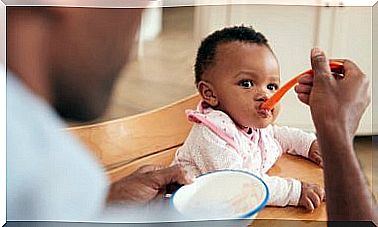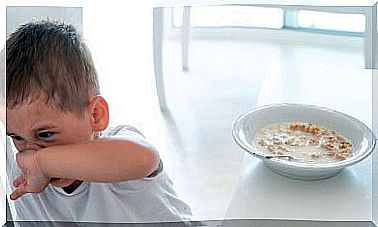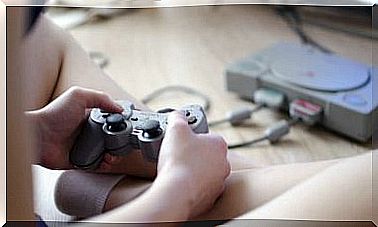Pain During Breastfeeding: What Is Normal And What Is Not

Pain during breastfeeding, as well as other problems, are very common, especially in new mothers. In the vast majority of cases this is not a problem for the baby, but if you are part of the minority, do not worry. In general, everything has a solution!
Many of the recommendations we provide below are based on the extensive Breastfeeding Counseling manual from the World Health Organization (WHO). If you are interested in knowing in summary what is normal and what is not during this process, keep reading!
What is normal?
What we will mention below can be considered normal as long as it does not represent a problem for the mother or the baby. In each of the sections we explain what this means in detail.
Pain during breastfeeding

We are not saying that breastfeeding is a painful process. In fact, it’s the opposite. However, the truth is that in less experienced mothers, during the first breastfeeding sessions, this practice can become painful for a few seconds.
The moment in which the baby begins to suck can cause a slight and short discomfort. If it persists, you should interrupt the process and reposition the little one. If this doesn’t fix your breastfeeding pain, you probably have poor latching technique.
Cracks
This is one of the most normal things about breastfeeding! Despite the fact that a newborn does not have teeth, the suction he makes is usually firm enough to cause minor injuries to the nipples. The famous cracks are normal and, as long as breastfeeding persists, they will be there.
It is advisable to observe its evolution and be aware that there are no cracks in the skin capable of causing blood to escape. This could facilitate the development of local infections that, in addition to hindering breastfeeding, would affect your quality of life.
White nipple
The white nipple phenomenon does not happen in all women, but in some cases, after a breastfeeding session, the nipple may turn whitish. As long as this is brief and not painful, it can be considered normal.
One likely explanation is the compression of the blood vessels caused by the baby’s suckling. Like what can happen in another part of the body, the surface begins to turn pale. It should not be confused with Raynaud’s disease, which causes similar pain-associated changes in the extremities.
Low milk production
Low milk production can only be considered “normal” when it is the result of poor grasping technique. If the baby is not well positioned, the structures necessary to facilitate the breastfeeding process will hardly be stimulated.
On the other hand, if you are sure that you are following a good technique, it is advisable to go to a trusted doctor. The causes can range from hormonal problems in the mother to defects in the baby’s sucking process. Don’t let too much time go by!
What is not normal?
When some of the above situations cause health problems, we are obviously talking about something abnormal. Fortunately, most of these conditions are treatable, either by a doctor or through breastfeeding counseling.
Mastitis
According to a publication of the Spanish Association of Pediatrics, the incidence of mastitis is around 10% of lactating women. In fact, it is most common in the first months of the baby’s life.
As its name suggests, mastitis is inflammation of the breast tissue. It happens that during breastfeeding the baby can produce microcracks, which serve as a gateway for many microorganisms. Some of them live on the surface of the skin, such as Staphylococcus aureus .
What’s the score? One of the breasts begins to increase in volume, become painful on palpation and you may feel a small mobile mass whose surface is red. Mastitis is one of the most common complications of breastfeeding, although, fortunately, it is usually alleviated with the use of antimicrobials.
Very short or very long breastfeeding sessions
Both situations can be the expression of some diseases and pain during breastfeeding. For example, if the mother is not producing adequate amounts of milk, the baby may suckle longer than necessary to obtain more nutrients. Remember that this process is given on demand, so the baby will remain until it “feels full.”
Very short sessions can also mean problems in the functioning of the child’s digestive system. This is especially important when it is accompanied by weight loss or poor weight gain.
Your baby is still hungry after feedings

Babies suck on demand, so if they are “hungry” after repeated feedings, there is likely a problem. You can detect this if the crying is frequent, does not fall asleep and the takes are very long, as we discussed in the previous section.
One of the reasons is the low milk production. The most normal causes may be due to an inadequate grip, that the feeding schedule is not completely correct and psychological factors of the mother, such as excessive anxiety and stress or lack of confidence.
Your baby loses weight and does not wet diapers
Unless the baby is in its first days of life, the weight gain is usually more or less constant. If you lose weight, it means that there is a problem in feeding and, usually, it is due to a low amount of breast milk consumed.
A good way to know if the amount of milk that is reaching the little one is enough is to check the number of times that he urinates a day through the change of diapers. Ideally, an infant should urinate 6 to 8 times a day and the urine should be light in color and with a tolerable odor.
On the other hand, if you notice that your baby urinates about 4 times a day or less, the color is very yellow and its smell is intense, it is very likely that he is not getting enough milk. All this indicates that the fluid that reaches your body is scarce, so your kidneys concentrate urine in the best possible way. The same happens in adults!
The pain is so bad that it interferes with breastfeeding
Persistent pain is not a good thing! Local infections are more than enough cause to seek professional help. Treatment options depend on the cause. In many cases there are obstructions that can be solved with manual milk expression.
If you need it, get help!
Breastfeeding is a natural and very enjoyable process, but it can be difficult at times. Ignorance and some health problems can work against you.
The good news is that there are many people willing to help, not only in hospitals, but in the dozens of breastfeeding counseling centers that you will surely find in your city. You already know, if you detect any abnormality, do not forget to consult a professional!










